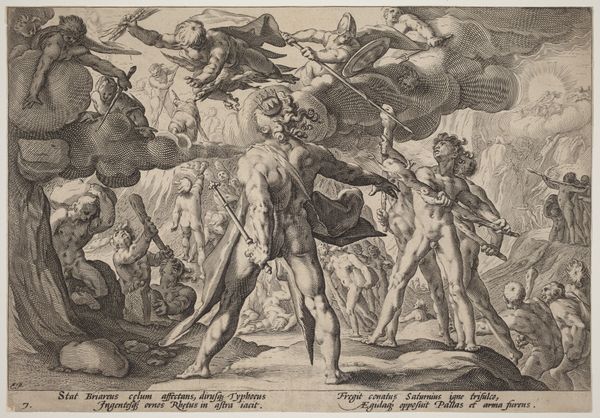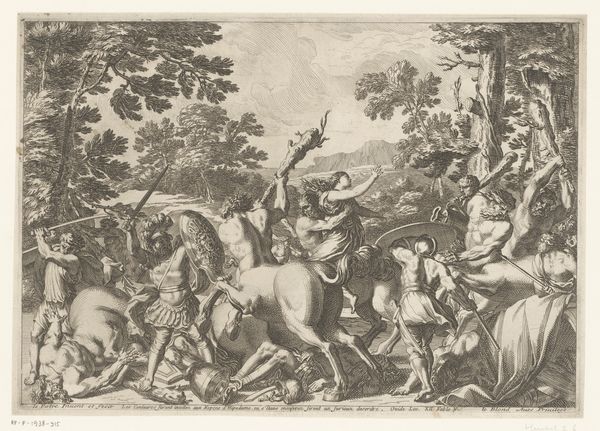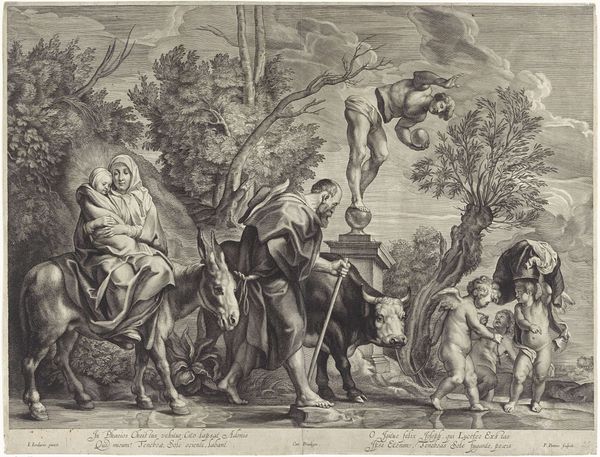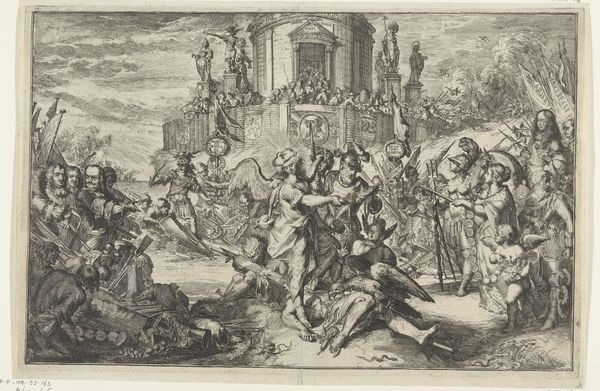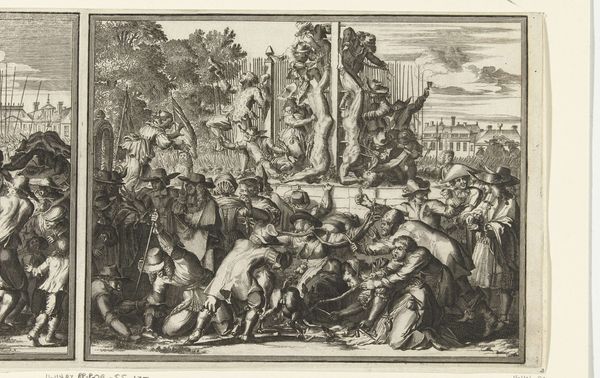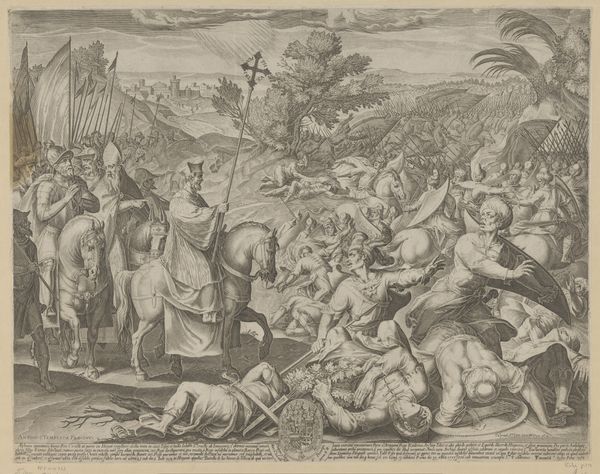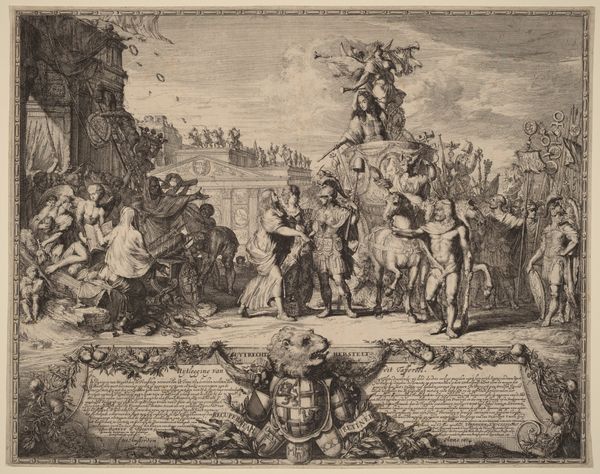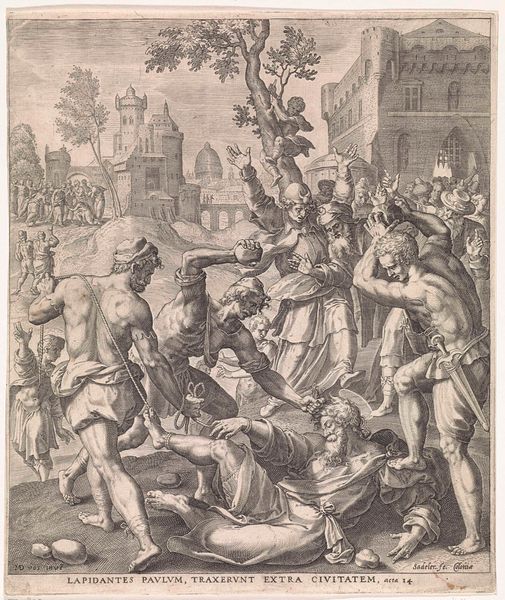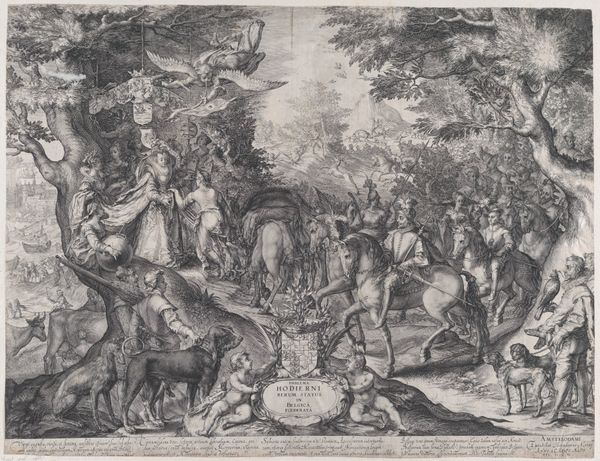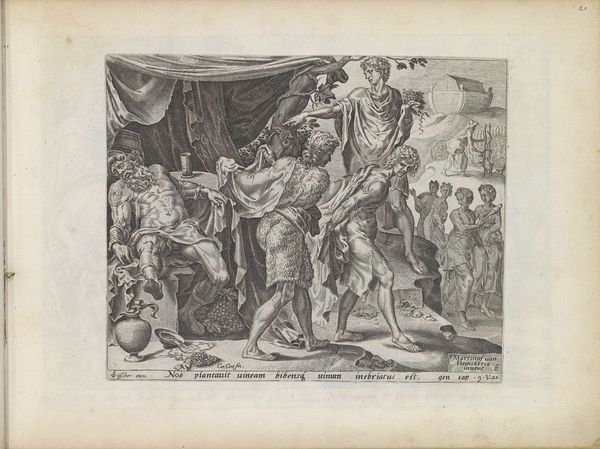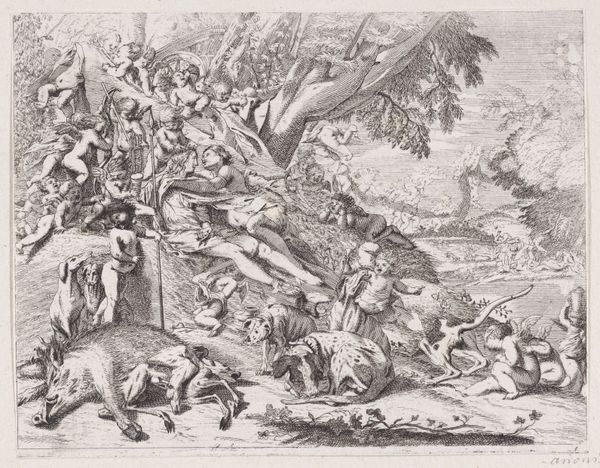
drawing, print, engraving
#
drawing
#
baroque
# print
#
figuration
#
female-nude
#
history-painting
#
engraving
#
male-nude
Dimensions: image: 8 7/8 x 13 1/8 in. (22.5 x 33.4 cm), trimmed with inscription cut off
Copyright: Public Domain
Editor: So, this is "Errant pendant la nuit..." or "Wandering by night…" by Claude Gillot, dating sometime between 1685 and 1722. It’s an engraving, so black lines on off-white paper, with a super chaotic scene full of nude figures and fantastical creatures. It feels… overwhelming, like a fever dream. What are your initial thoughts on this print? Curator: Overwhelming is a good word. It's teeming with imagery, a veritable cornucopia of symbols. Do you recognize any specific figures or recurring motifs that jump out at you? Editor: Well, there's a figure seated in the middle reading a book, surrounded by a kind of frenzy… almost Bacchanalian, but sinister? And what about the owl? Curator: Excellent observation! The seated figure certainly draws our eye, doesn't it? Consider the context of the time. During the Baroque period, images of night and wandering were often associated with folly and moral darkness. That central figure reading amidst the chaos – what does that juxtaposition suggest? And the owl – often a symbol of wisdom, but also of the nocturnal and hidden. Does its presence comfort or disturb you within this composition? Editor: I think it disturbs me. The owl above the seated figure seems to oversee the debauchery below, like a knowing participant rather than an objective observer. Is that the crescent moon a reference to the goddess Diana, always hanging around, an arbiter of night and its chaos? Curator: Precisely! The crescent moon hangs above. Now, look at the composition. The print feels divided into distinct zones of activity, from the dancing figures to the more grotesque creatures on the left. Could this be interpreted as a visual representation of the duality between reason and instinct, order and chaos, themes prevalent in the period’s intellectual discourse? Editor: It could definitely be that. I mean, with so much going on, it almost reads as a warning against the dangers of succumbing to those primal urges and abandoning reason. Is that Gillot trying to give viewers some insights into enduring truths, maybe? Curator: Perhaps, or maybe he is inviting viewers to grapple with these tensions themselves, showing cultural anxieties. Considering our conversation, this print certainly holds its symbolic weight through the ages, doesn't it? Editor: Definitely! It’s a potent reminder of how artists can tap into our deepest fears and desires through enduring symbols and themes. Thank you!
Comments
No comments
Be the first to comment and join the conversation on the ultimate creative platform.

